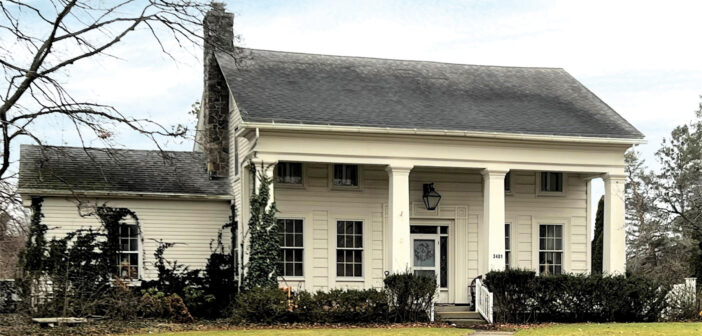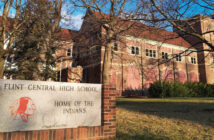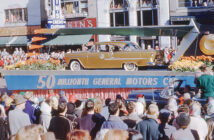Photos by wikicommons
The history of Greater Flint is steeped in relevance. We have seen titans of industry, great inventors, triumphs of commerce, heroes, villains, failure and renewal, and through it all stood our castles of time – the historic homes of Greater Flint.
If walls could talk, the area’s oldest homes would give us nearly the full story, from the beginnings of our beloved cities and towns to today, including all the glory and heartache in between. That these homes continue to stand is a testament to our love of tradition and acknowledgment of our past. Let’s take a look at five of Flint’s historic homes and how they came to be.
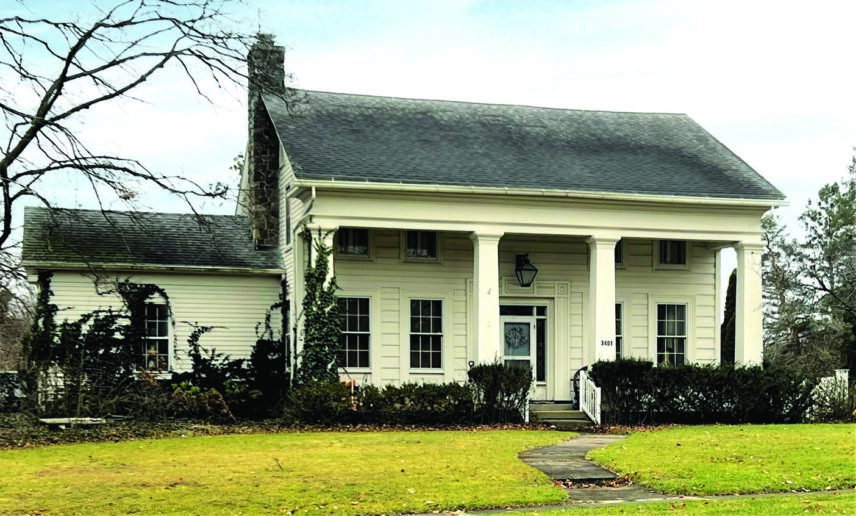
SAMSUNG CAMERA PICTURES
Josiah Begole House
3401 Westwood Parkway, Flint
Built: 1830s
Thought to be the oldest home still standing in the city, it is estimated that it was built in the mid-1830s, possibly before Michigan became a state (1837) and long before Flint became a city (1855). It has seen everything from the city’s early days on the banks of the Flint River to its golden age and beyond. At the time of its construction, native Americans outnumbered pioneers in the area. It was built at the corner of Beach and Court Streets by a New York settler named Eliakim M. Pratt, after he purchased the land from none other than Wait Beach himself.
In 1837, Josiah Begole left his home in New York State and traveled by boat to Toledo, OH. He then traveled on foot to Genesee County. Once here, he purchased 160 acres of farmland with a $520 loan from his father. As Begole became more involved in the Flint community, serving as election clerk, school inspector, justice of the peace, and in 1856 as County Treasurer, he looked to move to a residence closer to the center of activity. In 1857, Begole purchased the home from Pratt and lived in the residence until his death in 1896. The Begole family had always been staunch abolitionists during their time in the United States, moving their home from the slavery south to New York in the north to distance themselves from the practice. The Begole family even purchased slaves whenever they could to immediately release them. This mindset settled in Josiah Begole and his home became the center of the underground railroad and abolitionist movement in Flint before and during the Civil War. The home stood for equality and freedom even later as Begole, then state senator in 1870 fought for women’s rights as a member of the Flint Women’s Suffrage Association and as vice president of the Michigan Equal Suffrage Association.
The Begole Family held the home until 1928 after which it remained empty and was scheduled for demolition before E. M. Cumings took possession in 1930. Not wanting to destroy the history of the home, Cumings made the decision to move the house from the center of the growing and bustling city. It was subsequently cut in half and rebuilt at its current location. The house then cycled through a variety of owners, most notably Charles Tutt, Dean of Engineering at (GMI) Kettering University.
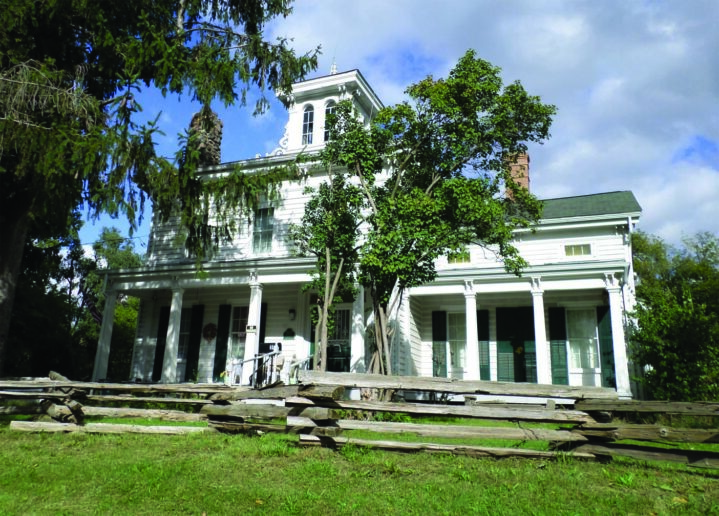
SAMSUNG CAMERA PICTURES
Robert P. Aitken Farm House
1110 N. Linden Rd., Flint
Built: Circa 1843
Born in Perth, New York in 1819 Robert P. Aitken moved to Flint Township in 1842. After purchasing a large tract of land in Flint Township, he established a very lucrative farm and built his home in 1843. A unique two-story construction with a hip roof and a cupola, the home stood out amongst its peers through its grandiose design and style. It was said that the cupola could be seen from miles away and it was a place Aitken routinely visited to gaze out upon his land. He became a big supporter of the city and was elected Flint Township Supervisor, a role he would fill for over 30 years. He also served as the secretary of the Genesee County Fire Insurance Company and as representative in the Michigan legislature. His son, David D. Aitken grew up in the house and became Flint City Attorney, Flint Mayor, and U. S. Representative from 1893-97. Robert P. Aitken died in 1905 and is buried in Glenwood Cemetery.

SAMSUNG CAMERA PICTURES
Fred A. Aldrich House
221 W. First Ave., Flint
Built: 1892
One of Flint’s most influential homes built on perhaps the place of the city’s birth, the Fred A. Aldrich House sits near the very location where Jacob Smith set up his trading post in 1811. In 1873, the land was deeded to the First Baptist Church of Flint by Smith’s daughter, Louisa Payne. The church operated on the land from 1873-89. In 1892, developer Stephen Crocker built five houses on the land including the Aldrich house.
Aldrich came to Flint with his family at the age of eight after his father purchased the Flint Globe newspaper. As he grew up in Flint, he met and became lifelong friends with a boy by named Billy Durant. He grew up to help manage the Flint Globe and in 1880, started a newspaper of his own – the Otter Lake Enterprise Newspaper. In 1889, three years before he would purchase the house, he went to work for Durant as clerk of the Flint Road Cart Company and then in 1896, as secretary of the Durant-Dort Carriage Company. Always one to have Durant’s ear, Aldrich helped get General Motors started by introducing Durant to James Whiting, President of the Buick Motor Company. Aldrich went on to have a hand in the construction of the Durant and Flint Tavern Hotels, the Community Chest, Flint Chapter of the American Red Cross, Flint Improvement Fund, Flint YMCA and the Flint Golf Club. One can imagine the meetings and conversations that took place within the walls of the Aldrich house between the giants of the Flint auto industry and philanthropy!
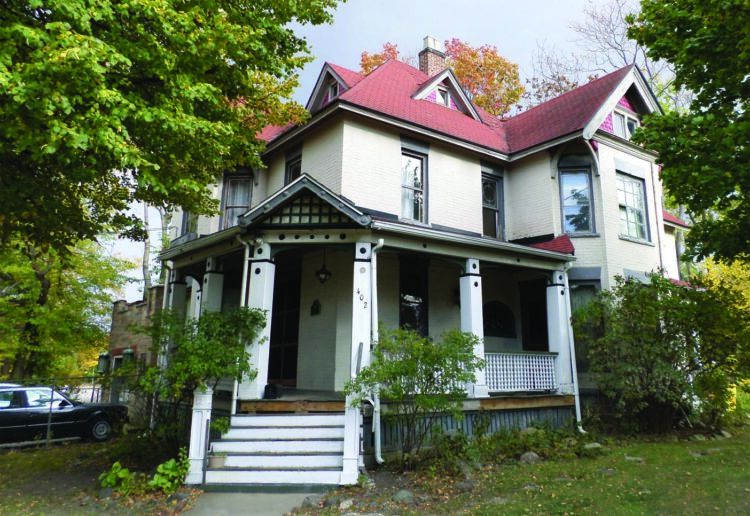
SAMSUNG CAMERA PICTURES
William S. Paterson House
402 E. 3rd St., Flint
Built: 1885
Constructed for his son in 1885, the Paterson House is evidence of the handiwork of another of Flint’s automotive leaders, William A. Paterson. Born in Ontario, Canada in 1838, Paterson came to Flint in 1869 and opened a carriage shop on Saginaw St. While working on carriages, he turned his attention to home construction and built at least 12 dwellings on E. Third St., three of which are still standing today. In 1890, Paterson would serve as Flint Mayor and later go on to found the Paterson Automobile Company and establish the famous Paterson building in Downtown Flint.
The house would stay in the hands of his son, William S. Paterson until 1928 when it was purchased by Dr. James K. Sutherland. An Armenian, Sutherland was born as Hagop Lutfi in present-day Turkey. He made his way to the U.S. and attended college in Iowa before coming to Flint and working as a cardiologist, physician, surgeon and Genesee County Coroner. He was also an accomplished musician and author. In 1965, he published his autobiography, The Adventures of an Armenian Boy and released a two-LP set of solo improvisations performed on the oud (a form of the lute) that were recorded in this home entitled “Mid-Eastern Meditations.” He also recorded an LP of Armenian melodies played on a Hammond organ (right hand) and piano ostinato (left hand). Dr. Sutherland died in 1988 and the house subsequently passed to a variety of owners.
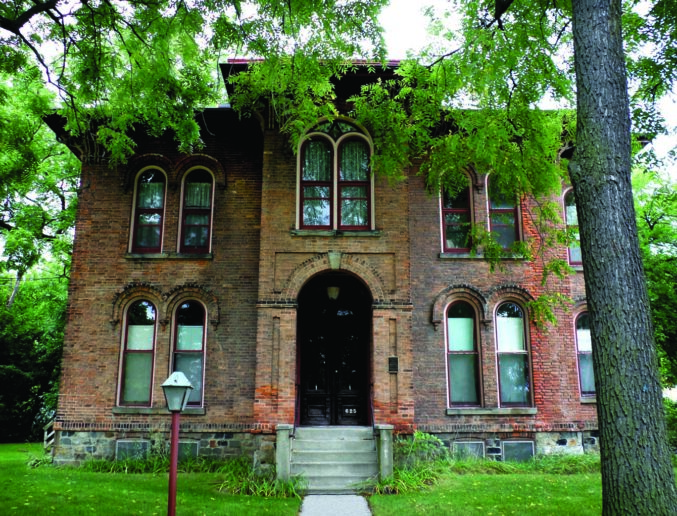
SAMSUNG CAMERA PICTURES
Abner C. Johnson House
625 East St., Flint
Built: 1873
Born in New York in 1821, Abner C. Johnson relocated to Independence Township (near Clarkston, MI) in 1836. Three years later, he purchased land in Mundy Township and started a successful farm that would remain in operation until his death in 1895. While in Flint, he met and studied law with the affable George W. Wismer and became one of Genesee County’s first attorneys. Later, Johnson entered into a partnership with the Wismer brothers buying and selling timber. In this endeavor, all concerned gained quite a fortune. As Johnson began to spend more and more time in Flint, it came as no surprise that he decided to move to the city leaving his farm in the care of his son Charles. In 1873, Johnson constructed the spectacular house on East St. using brick – going against the standard style of the time in Flint. Upon his death, the house transferred to Charles who became a successful lawyer himself, mentored by Col. Fenton. Upon Charles’ death, the house passed to his younger brothers Ransom and James. The house remained in the ownership of the Johnson family for over 100 years until it was sold in 1986.
We will explore more castles of time next month!

